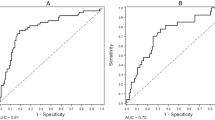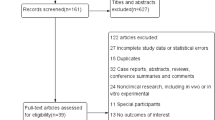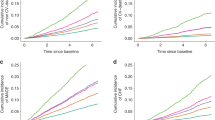Abstract
Strong and unidirectional associations exist between the severity of cardiovascular calcifications and mortality in patients with advanced chronic kidney disease. In the past 10 years, a wealth of experimental and clinical information has been published on the key pathophysiological events that contribute to the development and progression of vascular and soft-tissue calcifications. These processes involve a sensitive balance of calcification inhibition, induction and removal. The traditional view of regarding secondary hyperparathyroidism and elevated calcium × phosphate product as the pivotal risk factors for calcification has been challenged by data demonstrating a role for other, more subtle and complex pathomechanisms. These mechanisms include the loss of endogenous calcification inhibitors, deficient clearance of calcified debris, effects of vitamin K and vitamin D, and the action of calcification inducers as in osteogenic transdifferentiation. In this Review, we describe our current knowledge of the factors involved in the passive and active regulation of extraosseous calcification processes, with an assessment of their importance as targets for future diagnostic and therapeutic interventions.
Key Points
-
Extraosseous calcification is highly prevalent in patients with chronic kidney disease and may contribute to impaired outcomes
-
Defective clearance mechanisms of calcified debris, such as fetuin-A-dependent calciprotein particles, may contribute to increased calcification and serve as a future therapeutic target
-
Both phosphate and calcium contribute to osteogenic transdifferentiation in the vessel wall and serum levels of these elements should thus be closely controlled in patients with chronic kidney disease
-
Vitamin D and vitamin K have been linked to the regulation of calcification mechanisms, and controlled supplementation of these vitamins may be required in patients with chronic kidney disease
-
Drugs with anticalcific therapeutic potential include sodium thiosulfate, bisphosphonates and calcimimetics, which intervene with extraosseous calcification processes through various molecular mechanisms
This is a preview of subscription content, access via your institution
Access options
Subscribe to this journal
Receive 12 print issues and online access
$209.00 per year
only $17.42 per issue
Buy this article
- Purchase on Springer Link
- Instant access to full article PDF
Prices may be subject to local taxes which are calculated during checkout



Similar content being viewed by others
References
Goodman, W. G. et al. for the Vascular Calcification Work Group. Vascular calcification in chronic kidney disease. Am. J. Kidney Dis. 43, 572–579 (2004).
Ketteler, M., Schlieper, G. & Floege, J. Calcification and cardiovascular health: new insights into an old phenomenon. Hypertension 47, 1027–1034 (2006).
Kidney Disease: Improving Global Outcomes (KDIGO) CKD-MBD Work Group. KDIGO clinical practice guideline for the diagnosis, evaluation, prevention, and treatment of Chronic Kidney Disease-Mineral and Bone Disorder (CKD-MBD). Kidney Int. Suppl. 113, S1–S130 (2009).
Guérin, A. P., Pannier, B., Métivier, F., Marchais, S. J. & London, G. M. Assessment and significance of arterial stiffness in patients with chronic kidney disease. Curr. Opin. Nephrol. Hypertens. 17, 635–641 (2008).
Ohara, T., Hashimoto, Y., Matsumura, A., Suzuki, M. & Isobe, M. Accelerated progression and morbidity in patients with aortic stenosis on chronic dialysis. Circ. J. 69, 1535–1539 (2005).
Schlieper, G. et al. Ultrastructural analysis of vascular calcifications in uremia. J. Am. Soc. Nephrol. 21, 689–696 (2010).
Price, P. A. & Lim, J. E. The inhibition of calcium phosphate precipitation by fetuin is accompanied by the formation of a fetuin-mineral complex. J. Biol. Chem. 278, 22144–22152 (2003).
Price, P. A., Williamson, M. K., Nguyen, T. M. & Than, T. N. Serum levels of the fetuin-mineral complex correlate with artery calcification in the rat. J. Biol. Chem. 279, 1594–1600 (2004).
Heiss, A. et al. Hierarchical role of fetuin-A and acidic serum proteins in the formation and stabilization of calcium phosphate particles. J. Biol. Chem. 283, 14815–14825 (2008).
Hamano, T. et al. Fetuin-mineral complex reflects extraosseous calcification stress in CKD. J. Am. Soc. Nephrol. 21, 1998–2007 (2010).
Matsui, I. et al. Fully phosphorylated fetuin-A forms a mineral complex in the serum of rats with adenine-induced renal failure. Kidney Int. 75, 915–928 (2009).
Ketteler, M. et al. Association of low fetuin-A (AHSG) concentrations in serum with cardiovascular mortality in patients on dialysis: a cross-sectional study. Lancet 361, 827–833 (2003).
Stenvinkel, P. et al. Low fetuin-A levels are associated with cardiovascular death: impact of variations in the gene encoding fetuin. Kidney Int. 67, 2383–2392 (2005).
Wang, A. Y. et al. Associations of serum fetuin-A with malnutrition, inflammation, atherosclerosis and valvular calcification syndrome and outcome in peritoneal dialysis patients. Nephrol. Dial. Transplant. 20, 1676–1685 (2005).
Mehrotra, R. et al. Serum fetuin-A in nondialyzed patients with diabetic nephropathy: relationship with coronary artery calcification. Kidney Int. 67, 1070–1077 (2005).
Ix, J. H. et al. Fetuin-A is not associated with mortality in chronic kidney disease. Kidney Int. 72, 1394–1399 (2007).
Jahnen-Dechent, W., Schäfer, C., Ketteler, M. & McKee, M. D. Mineral chaperones: a role for fetuin-A and osteopontin in the inhibition and regression of pathologic calcification. J. Mol. Med. 86, 379–389 (2008).
Lebreton, J. P. et al. Serum concentration of human alpha 2 HS glycoprotein during the inflammatory process: evidence that alpha 2 HS glycoprotein is a negative acute-phase reactant. J. Clin. Invest. 64, 1118–1129 (1979).
Brandenburg, V. M. et al. Serological cardiovascular and mortality risk predictors in dialysis patients receiving sevelamer: a prospective study. Nephrol. Dial. Transplant. 25, 2672–2679 (2010).
Caglar, K. et al. Short-term treatment with sevelamer increases serum fetuin-A concentration and improves endothelial dysfunction in chronic kidney disease stage 4 patients. Clin. J. Am. Soc. Nephrol. 3, 61–68 (2008).
Jono, S. et al. Phosphate regulation of vascular smooth muscle cell calcification. Circ. Res. 87, E10–E17 (2000).
Giachelli, C. M. The emerging role of phosphate in vascular calcification. Kidney Int. 75, 890–897 (2009).
Reynolds, J. L. et al. Multifunctional roles for serum protein fetuin-A in inhibition of human vascular smooth muscle cell calcification. J. Am. Soc. Nephrol. 16, 2920–2930 (2005).
Moe, S. M. et al. Medial artery calcification in ESRD patients is associated with deposition of bone matrix proteins. Kidney Int. 61, 638–647 (2002).
Moe, S. M., Duan, D., Doehle, B. P., O'Neill, K. D. & Chen, N. X. Uremia induces the osteoblast differentiation factor Cbfa1 in human blood vessels. Kidney Int. 63, 1003–1011 (2003).
Shroff, R. C. et al. Chronic mineral dysregulation promotes vascular smooth muscle cell adaptation and extracellular matrix calcification. J. Am. Soc. Nephrol. 21, 103–112 (2010).
van den Broek, F. A. & Beynen, A. C. The influence of dietary phosphorus and magnesium concentrations on the calcium content of heart and kidneys of DBA/2 and NMRI mice. Lab. Anim. 32, 483–491 (1998).
Schafer, C. et al. The serum protein alpha 2-Heremans-Schmid glycoprotein/fetuin-A is a systemically acting inhibitor of ectopic calcification. J. Clin. Invest. 112, 357–366 (2003).
Meema, H. E., Oreopoulos, D. G. & Rapoport, A. Serum magnesium level and arterial calcification in end-stage renal disease. Kidney Int. 32, 388–394 (1987).
Tzanakis, I. et al. Intra- and extracellular magnesium levels and atheromatosis in haemodialysis patients. Magnes. Res. 17, 102–108 (2004).
Ishimura, E. et al. Significant association between the presence of peripheral vascular calcification and lower serum magnesium in hemodialysis patients. Clin. Nephrol. 68, 222–227 (2007).
de Francisco, A. L. et al. Evaluation of calcium acetate/magnesium carbonate as a phosphate binder compared with sevelamer hydrochloride in haemodialysis patients: a controlled randomized study (CALMAG study) assessing efficacy and tolerability. Nephrol. Dial. Transplant. 25, 3707–3717 (2010).
Krueger, T., Westenfeld, R., Ketteler, M., Schurgers, L. J. & Floege, J. Vitamin K deficiency in CKD patients: a modifiable risk factor for vascular calcification? Kidney Int. 76, 18–22 (2009).
Luo, G. et al. Spontaneous calcification of arteries and cartilage in mice lacking matrix GLA protein. Nature 386, 78–81 (1997).
Murshed, M., Schinke, T., McKee, M. D. & Karsenty, G. Extracellular matrix mineralization is regulated locally; different roles of two gla-containing proteins. J. Cell Biol. 165, 625–630 (2004).
Schurgers, L. J. et al. Regression of warfarin-induced medial elastocalcinosis by high intake of vitamin K in rats. Blood 109, 2823–2831 (2007).
Koos, R. et al. Relation of oral anticoagulation to cardiac valvular and coronary calcium assessed by multislice spiral computed tomography. Am. J. Cardiol. 96, 747–749 (2005).
Wilmer, W. A. & Magro, C. M. Calciphylaxis: emerging concepts in prevention, diagnosis, and treatment. Semin. Dial. 15, 172–186 (2002).
Schlieper, G. et al. Circulating nonphosphorylated carboxylated matrix gla protein predicts survival in ESRD. J. Am. Soc. Nephrol. 22, 387–395 (2011).
Parker, B. D. et al. The associations of fibroblast growth factor 23 and uncarboxylated matrix Gla protein with mortality in coronary artery disease: the Heart and Soul Study. Ann. Intern. Med. 152, 640–648 (2010).
Schurgers, L. J. et al. The circulating inactive form of matrix gla protein is a surrogate marker for vascular calcification in chronic kidney disease: a preliminary report. Clin. J. Am. Soc. Nephrol. 5, 568–575 (2010).
Cranenburg, E. C., Schurgers, L. J. & Vermeer, C. Vitamin K: the coagulation vitamin that became omnipotent. Thromb. Haemost. 98, 120–125 (2007).
Nakagawa, K. et al. Identification of UBIAD1 as a novel menaquinone-4 biosynthetic enzyme. Nature 468, 117–121 (2010).
Chan, K. E., Lazarus, J. M., Thadhani, R. & Hakim, R. M. Warfarin use associates with increased risk for stroke in hemodialysis patients with atrial fibrillation. J. Am. Soc. Nephrol. 20, 2223–2233 (2009).
Price, P. A., Omid, N., Than, T. N. & Williamson, M. K. The amino bisphosphonate ibandronate prevents calciphylaxis in the rat at doses that inhibit bone resorption. Calcif. Tissue Int. 71, 356–363 (2002).
Haffner, D. et al. Systemic cardiovascular disease in uremic rats induced by 1,25(OH)2D3. J. Hypertens. 23, 1067–1075 (2005).
National Kidney Foundation. K/DOQI clinical practice guidelines for bone metabolism and disease in chronic kidney disease. Am. J. Kidney Dis. 42 (Suppl. 3), S1–S201 (2003).
Mizobuchi, M., Finch, J. L., Martin, D. R. & Slatopolsky, E. Differential effects of vitamin D receptor activators on vascular calcification in uremic rats. Kidney Int. 72, 709–715 (2007).
Mathew, S., Lund, R. J., Chaudhary, L. R., Geurs, T. & Hruska, K. A. Vitamin D receptor activators can protect against vascular calcification. J. Am. Soc. Nephrol. 19, 1509–1519 (2008).
Francis, M. D., Russell, R. G. & Fleisch, H. Diphosphonates inhibit formation of calcium phosphate crystals in vitro and pathological calcification in vivo. Science 165, 1264–1266 (1969).
Towler, D. A. Inorganic pyrophosphate: a paracrine regulator of vascular calcification and smooth muscle phenotype. Arterioscler. Thromb. Vasc. Biol. 25, 651–654 (2005).
Okawa, A. et al. Mutation in Npps in a mouse model of ossification of the posterior longitudinal ligament of the spine. Nat. Genet. 19, 271–273 (1998).
Ho, A. M., Johnson, M. D. & Kingsley, D. M. Role of the mouse ank gene in control of tissue calcification and arthritis. Science 289, 265–270 (2000).
Rutsch, F. et al. Mutations in ENPP1 are associated with 'idiopathic' infantile arterial calcification. Nat. Genet. 34, 379–381 (2003).
O'Neill, W. C., Sigrist, M. K. & McIntyre, C. W. Plasma pyrophosphate and vascular calcification in chronic kidney disease. Nephrol. Dial. Transplant. 25, 187–191 (2010).
O'Neill, W. C., Lomashvili, K. A., Malluche, H. H., Faugere, M. C. & Riser, B. L. Treatment with pyrophosphate inhibits uremic vascular calcification. Kidney Int. 79, 512–517 (2011).
van der Sluis, I. M., Boot, A. M., Vernooij, M., Meradji, M. & Kroon, A. A. Idiopathic infantile arterial calcification: clinical presentation, therapy and long-term follow-up. Eur. J. Pediatr. 165, 590–593 (2006).
Nitta, K. et al. Effects of cyclic intermittent etidronate therapy on coronary artery calcification in patients receiving long-term hemodialysis. Am. J. Kidney Dis. 44, 680–688 (2004).
Monney, P., Nguyen, Q. V., Perroud, H. & Descombes, E. Rapid improvement of calciphylaxis after intravenous pamidronate therapy in a patient with chronic renal failure. Nephrol. Dial. Transplant. 19, 2130–2132 (2004).
St Hilaire, C. et al. NT5E mutations and arterial calcifications. N. Engl. J. Med. 364, 432–442 (2011).
Schlieper, G., Brandenburg, V., Ketteler, M. & Floege, J. Sodium thiosulfate in the treatment of calcific uremic arteriolopathy. Nat. Rev. Nephrol. 5, 539–543 (2009).
Meade, D. et al. Sodium thiosulfate therapy for calciphylaxis in hemodialysis patients [abstract]. American Society of Nephrology Renal Week TH-PO459 (2010).
Pasch, A. et al. Sodium thiosulfate prevents vascular calcifications in uremic rats. Kidney Int. 74, 1444–1453 (2008).
Adirekkiat, S. et al. Sodium thiosulfate delays the progression of coronary artery calcification in haemodialysis patients. Nephrol. Dial. Transplant. 25, 1923–1929 (2010).
Mathews, S. J. et al. Effects of sodium thiosulfate on vascular calcification in end-stage renal disease: a pilot study of feasibility, safety and efficacy. Am. J. Nephrol. 33, 131–138 (2011).
O'Neill, W. C., Hardcastle, K. & Dubyak, G. R. Thiosulfate inhibits vascular calcification in vitro independent of interactions with calcium or hydroxyapatite [abstract]. American Society of Nephrology Renal Week TH-PO131 (2010).
Block, G. A. et al. Cinacalcet for secondary hyperparathyroidism in patients receiving hemodialysis. N. Engl. J. Med. 350, 1516–1525 (2004).
Henley, C. et al. The calcimimetic AMG 641 abrogates parathyroid hyperplasia, bone and vascular calcification abnormalities in uremic rats. Eur. J. Pharmacol. 616, 306–313 (2009).
Lopez, I. et al. Calcimimetic R-568 decreases extraosseous calcifications in uremic rats treated with calcitriol. J. Am. Soc. Nephrol. 17, 795–804 (2006).
Lopez, I. et al. The effect of calcitriol, paricalcitol, and a calcimimetic on extraosseous calcifications in uremic rats. Kidney Int. 73, 300–307 (2008).
Lopez, I. et al. The calcimimetic AMG 641 accelerates regression of extraosseous calcification in uremic rats. Am. J. Physiol. Renal Physiol. 296, F1376–F1385 (2009).
Raggi, P. et al. for the ADVANCE Study Group. The ADVANCE study: a randomized study to evaluate the effects of cinacalcet plus low-dose vitamin D on vascular calcification in patients on hemodialysis. Nephrol. Dial. Transplant. 26, 1327–1339 (2010).
Chertow, G. M. et al. Evaluation of Cinacalcet Therapy to Lower Cardiovascular Events (EVOLVE): rationale and design overview. Clin. J. Am. Soc. Nephrol. 2, 898–905 (2007).
Shroff, R. C. et al. Dialysis accelerates medial vascular calcification in part by triggering smooth muscle cell apoptosis. Circulation 118, 1748–1757 (2008).
Hofmann Bowman, M. A. et al. S100A12 in vascular smooth muscle accelerates vascular calcification in apolipoprotein E-null mice by activating an osteogenic gene regulatory program. Arterioscler. Thromb. Vasc. Biol. 31, 337–344 (2011).
Shiotsu, Y. et al. Plasma S100A12 level is associated with cardiovascular disease in hemodialysis patients. Clin. J. Am. Soc. Nephrol. 6, 718–723 (2011).
Wolf, M. Forging forward with 10 burning questions on FGF23 in kidney disease. J. Am. Soc. Nephrol. 21, 1427–1435 (2010).
Van Campenhout, A. & Golledge, J. Osteoprotegerin, vascular calcification and atherosclerosis. Atherosclerosis 204, 321–329 (2009).
Mathew, S. et al. The mechanism of phosphorus as a cardiovascular risk factor in CKD. J. Am. Soc. Nephrol. 19, 1092–1105 (2008).
Shao, J. S., Cheng, S. L., Sadhu, J. & Towler, D. A. Inflammation and the osteogenic regulation of vascular calcification: a review and perspective. Hypertension 55, 579–592 (2010).
Pai, A., Leaf, E. M., El-Abbadi, M. & Giachelli, C. M. Elastin degradation and vascular smooth muscle cell phenotype change precede cell loss and arterial medial calcification in a uremic mouse model of chronic kidney disease. Am. J. Pathol. 178, 764–773 (2011).
Tonelli, M., Sacks, F., Pfeffer, M., Gao, Z. & Curhan, G. for the Cholesterol And Recurrent Events Trial Investigators. Relation between serum phosphate level and cardiovascular event rate in people with coronary disease. Circulation 112, 2627–2633 (2005).
Dhingra, R. et al. Relations of serum phosphorus and calcium levels to the incidence of cardiovascular disease in the community. Arch. Intern. Med. 167, 879–885 (2007).
Bolland, M. J. et al. Effect of calcium supplements on risk of myocardial infarction and cardiovascular events: meta-analysis. BMJ 341, c3691 (2010).
Author information
Authors and Affiliations
Contributions
M. Ketteler, P. H. Biggar and G. Schlieper wrote the article. All the authors contributed equally to researching data for the article, substantial contribution to discussion of the content, and reviewing and editing of the manuscript before submission.
Corresponding author
Ethics declarations
Competing interests
M. Ketteler has worked as a consultant for and received speakers bureau honoraria from Abbott, Amgen, Fresenius Medical Care, Genzyme and Shire, and received grant/research support from Abbott and Amgen. P. H. Biggar has received speakers bureau honoraria from Abbott, Amgen and Genzyme. G. Schlieper has received speakers bureau honoraria from Amgen, Gambro and Genzyme and received grant/research support from Genzmye. H. Rothe and T. Krüger declare no competing interests.
Rights and permissions
About this article
Cite this article
Ketteler, M., Rothe, H., Krüger, T. et al. Mechanisms and treatment of extraosseous calcification in chronic kidney disease. Nat Rev Nephrol 7, 509–516 (2011). https://doi.org/10.1038/nrneph.2011.91
Published:
Issue Date:
DOI: https://doi.org/10.1038/nrneph.2011.91
This article is cited by
-
Gut microbial metabolites SCFAs and chronic kidney disease
Journal of Translational Medicine (2024)
-
Vascular pathologies in chronic kidney disease: pathophysiological mechanisms and novel therapeutic approaches
Journal of Molecular Medicine (2021)
-
Emerging therapies for cartilage regeneration in currently excluded ‘red knee’ populations
npj Regenerative Medicine (2019)
-
Abdominal aortic calcification score can predict future coronary artery disease in hemodialysis patients: a 5-year prospective cohort study
BMC Nephrology (2018)
-
Prognostic value of cardiovascular calcifications in hemodialysis patients: a longitudinal study
International Urology and Nephrology (2018)



